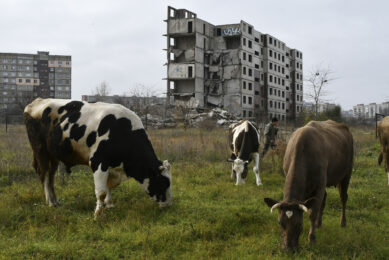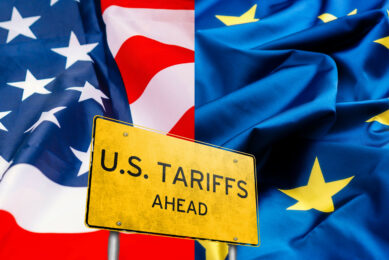Global feed survey – Gaining in-depth knowledge

Traditionally, global feed production has been difficult to quantify due to the lack of national feed associations. That is why, in 2011, Alltech began gathering a more accurate estimate of tonnage. In its second report, 134 countries were assessed. Information was obtained from either local feed associations or Alltech’s 500 sales force who visit more than 26,000 feed mills annually.
Global feed tonnage was 954 million in 2012, a 9% increase over the 2011 estimate of 873 million. However, the actual underlying growth is likely to be 4-5% since the latest results include new information sources and higher accuracy for individual species. Brazil, Russia, India and China (BRIC) represent 33 million tonnes of the increase.
Asia continues to be the world’s leading feed producing region with 356 million tonnes (Figure 1). One region, Africa – exceeded Asia in percentage growth over 2011 results, increasing its tonnage 19% to 56 million in 2012. The Middle East was estimated to have the largest feed mills, with an average of more than 63,000 tonnes produced per mill (Table 1). In this respect Asia has the smallest average capacity per mill among all regions, with 28,800 tonnes in 2012. Figure 4 shows feed mill numbers in major feed producing countries.
Major species for animal protein
Looking at the figures by species (Figure 2), poultry continues to dominate with a 44% share of the feed market at 417.8 million tonnes, likely due to religious and taste preferences as well as cost. It grew by approximately 10% over 2011 estimates. Sixty percent of poultry is dedicated to broilers, with the rest fed to egg layers, turkeys, duck and other fowl. The pig feed sector matched poultry’s 8% growth, moving to 218 million tonnes globally. The ruminant feed market grew more than 13% to 254 million tonnes. Feed for aquaculture grew nearly 16% since 2011.
Equine
Equine feed tonnage increased almost 17% to 10.8 million tonnes. The USA is still leading the way for equine feed production. Many European equine feed companies have had to look further afield than their own domestic markets to sustain and grow. Large volumes of horse feeds are exported annually, predominantly to emerging markets such as the Middle East and Asia.
Pet food
Pet food represented 20.5 million tonnes in 2012, 45% of which were produced in North America (Figure 3). However, Brazil and Mexico are making remarkable advances in this sector. It is considered that the human food trend will be followed by pets soon thereafter. With wellness, supply chain transparency, gluten free (grain free) options and social media all playing a part, 2013 will focus on natural and organic pet food. This will grow in popularity, as “pet parents” become more conscientious of and educated about their pets’ nutritional requirements.
Outlook
“As we look to the demands of the future, chiefly the feeding of 9 billion people by 2050, these survey results should stir optimism and resolve within our feed and food industries,” said Dr Pearse Lyons, president of Alltech. “Our global feed industry is rising to the challenge, and we’re seeing growth across the board. Moreover, we’re seeing it in BRIC, Africa and also with species mainly in aquaculture.”











